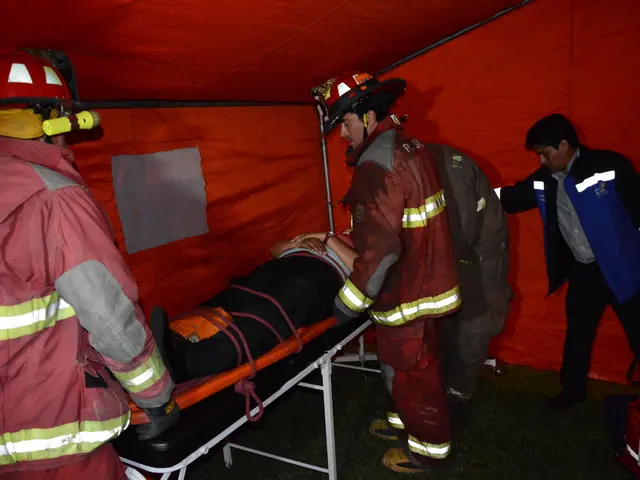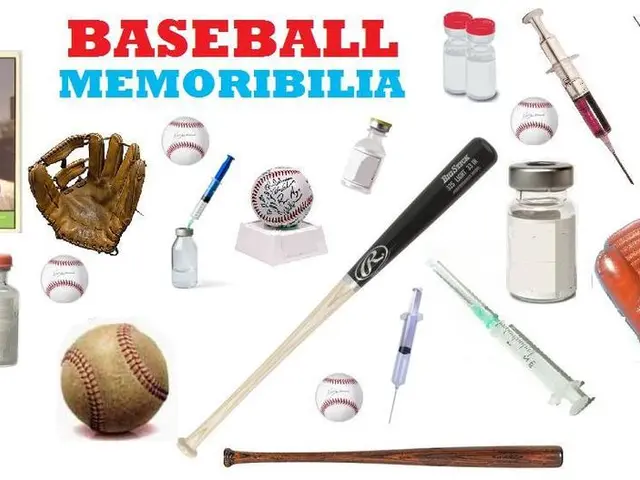Factors that may lead to the onset of Tenosynovitis
Tenosynovitis is a common condition that affects the tendons, the fibrous tissues that connect muscles to bones. When these tissues become inflamed, it can lead to pain and discomfort. This article delves into the various causes, symptoms, and prevention strategies for tenosynovitis.
Causes of Tenosynovitis
Tenosynovitis can be caused by a variety of factors. Infectious tenosynovitis is often the result of bacterial or viral invasions of the protective sheath surrounding the tendon. Common organisms responsible include MRSA, Staphylococcus aureus, and other bacteria. The development of tenosynovitis can also be due to autoimmune responses, crystal deposits, or overuse [1].
Specific types of tenosynovitis, such as De Quervain’s tenosynovitis, may be linked to repetitive thumb or wrist movements, pre-existing arthritis, pregnancy, and older age, particularly in women [1][2][3].
Other conditions associated with the development of tenosynovitis include rheumatoid arthritis, gout, and various inflammatory arthritides [3][5]. Trauma and direct injury can also precipitate tenosynovitis by damaging the tendon or sheath [1][5].
Symptoms of Tenosynovitis
Common warning signs of tenosynovitis include pain and tenderness around the tendon, noticeable swelling, restricted movement, and visible discoloration following the tendon. In its advanced stages, the sheath can thicken and inflame, preventing the tendon from moving smoothly [1].
Prevention and Management
Prevention strategies for tenosynovitis include taking regular breaks from repetitive activities, using proper protective equipment, maintaining correct form during exercise, gradually increasing activity intensity, and taking regular breaks during repetitive tasks.
Infectious tenosynovitis can progress through three distinct stages: inflammatory fluid buildup, infected fluid filled with pus, and destruction of the tendon sheath, tendon, and surrounding tissue. Pregnant, breastfeeding, and postpartum women can be more prone to tenosynovitis due to natural hormonal shifts. Certain underlying conditions, such as older age, diabetes, peripheral vascular disease, and kidney disease, can complicate the healing process and increase the risk of complications with infectious tenosynovitis [4].
Stenosing Tenosynovitis
Stenosing tenosynovitis occurs when the protective covering around the tendon becomes inflamed and puffy, making it harder for the tendon to move smoothly. Examples include trigger finger and de Quervain's tenosynovitis.
In some cases, tenosynovitis can be a result of gout, a condition where intense inflammation around the tendons and their protective sheaths occurs due to the buildup of tiny crystals of uric acid. Diabetes can also increase the risk of tenosynovitis due to the formation of harmful compounds called advanced glycation end products (AGEs) in body tissues, including tendons [4].
Conclusion
Tenosynovitis is a condition that can affect anyone, and its causes can range from infectious agents to overuse injuries and autoimmune disorders. By understanding the causes and symptoms, individuals can take preventative measures to reduce their risk of developing tenosynovitis. If symptoms do arise, prompt medical attention is essential to prevent further complications.
[1] Mayo Clinic. (2021). Tenosynovitis. https://www.mayoclinic.org/diseases-conditions/tenosynovitis/symptoms-causes/syc-20367161
[2] American Academy of Orthopaedic Surgeons. (2021). De Quervain's Tenosynovitis. https://orthoinfo.aaos.org/en/diseases--conditions/de-quervains-tenosynovitis
[3] Arthritis Foundation. (2021). Tenosynovitis. https://www.arthritis.org/diseases/connective-tissue-disease/complications/tenosynovitis.php
[4] Johns Hopkins Medicine. (2021). Tenosynovitis. https://www.hopkinsmedicine.org/health/conditions-and-diseases/tenosynovitis
[5] Cleveland Clinic. (2021). Tenosynovitis. https://my.clevelandclinic.org/health/diseases/17192-tenosynovitis
The development of tenosynovitis can be due to various factors, including bacterial or viral invasions (such as MRSA and Staphylococcus aureus), autoimmune responses, crystal deposits, overuse, and certain medical conditions like diabetes [4]. Diabetes is a health condition that can increase the risk of tenosynovitis due to the formation of harmful compounds called advanced glycation end products (AGEs) in body tissues, including tendons. Meanwhile, mental health is equally important when dealing with physical health conditions, as prompt medical attention is essential to manage tenosynovitis and prevent further complications [1]. Therefore, personal health-and-wellness should prioritize both physical health and mental health.




